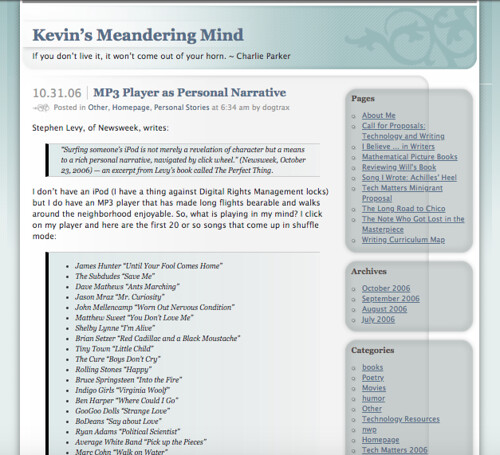
Processing 06 flickr photo by crstnksslr shared under a Creative Commons (BY-SA) license
Funny. This post is NOT about Facebook. But it could have been …
We had a disagreement brewing in the kitchen the other day. My wife and I, and our three boys (the oldest, in college, and the youngest, in middle school). The whole family. The dog watched.
We were arguing about privacy, and technology, and the split between my wife and I (we both try to guard our privacy from apps and technology companies, and we both teach our students to do the same) and our sons (who shrug their shoulders, and accept that they give up their data to use technology) seemed striking to me.
At issue was MoviePass, a subscription service that allows you to pay a low price and access movies throughout the month at the theater (only 2D movies), one per day. It costs $6.95 a month (oops, now back to $9.95 a month), and we thought about getting it for our middle son for his 18th birthday. But as I looked deeper into the service, spending time digging into how the app and system works, I started to wonder how the company was pulling off such a thing — the price seemed to low for them to make any real money.
Too good to be true?
Yes, I think so.
A little research found that the MoviePass app sucks up data off your phone, about your location and other using habits, and uses that data to sell info about you, and makes money. Of course. Now, that makes sense. The moviegoer is the product. Sound familiar?
We told our son, no on MoviePass, which led to our heated discussion in the kitchen of parents vs. children, with our older son saying he bought and installed MoviePass and, and uses it regularly at college, and while he calls the gathering of data “kind of creepy,” he accepts that trade-off for movie access.
“Everyone is gathering all of our data, all the time, anyway,” was the response from the older boy, to which I nearly lost it, because while this is true (I’m looking at you, Facebook), it doesn’t mean we have to accept it. We can NOT use an app or technology. We CAN find alternatives, of different flavor maybe and perhaps not of the same range, but we can find alternatives.
Trading our personal information for convenience is a false bargain, I told my kids, when companies make us, our lives, our data, their “product” but even my kids seemed to have already tuned me out and accepted that this stance is a Lost Cause of the Modern Age. Perhaps this is another generational battle, with the old folks holding on by our fingernails to some sense of privacy.
I was listening to a piece on NPR with folks from the Pew Internet division, which does all sorts of interesting surveys, and the researcher noted that there is indeed a difference between older and younger users of technology. But not like we think. He noted that younger users do worry about privacy with technology but they are more apt to keep tabs on how their data is being used, and more apt to change privacy settings. They are also more apt to accept the devil’s bargain of data/privacy for access. Older folks complain and worry but do little other than not decide to not use the technology, or abandon it. They don’t monitor their activity as much as younger people, until something hits the headlines.
… younger people are much more active online, much more forgiving of some of the circumstances when their data are captured and used in some ways to deliver products and services to them. But they’re also more vigilant than their elders in monitoring. They watch what’s posted about them, they watch what pictures their name is tagged in, and they’re very concerned about the way that they present themselves online. So they curate their identity and their reputation very aggressively. — Lee Rainie, director of Internet and technology research at Pew Research Center
I don’t think this push against privacy intrusion for profit is all a lost cause, but it does feel like an uphill battle so much of the time and we can’t wait for Congress to take action (because we know how that story goes).
We did not get MoviePass, but instead, we paid what it would have cost us for a year into a gift card to the movie theater for our birthday boy.
“I’m just going to get MoviePass myself anyway,” the boy announced.
Sigh.
Peace (and protection),
Kevin











